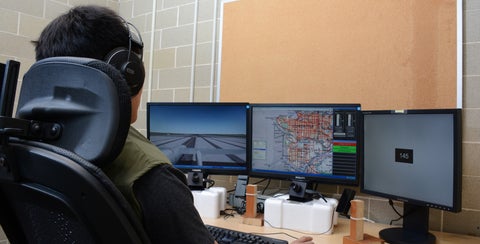Overview
The Advanced Interface Design Lab is located within a larger developmental space (EC4 Second Floor) shared by Human Factors faculty at the Systems Design Engineering Department. Additionally, a separate shared space is dedicated for conducting experiments with human participants. Our research involves extensive use of software and hardware equipment summarized below.
Hardware
- Microsoft Hololens (donated by Microsoft Canada)
- Oculus Rift
- Wacom’s Cintiq 21UX Interactive Pen Display – A monitor with the capabilities of a pen-controlled tablet that allows you to draw directly on the screen
- Cameras, headsets for monitoring the experimental space
- Affectiva Q Sensor
- Physiological Monitoring Setup for Intensive Care
- Ventilators and ICU equipment for healthcare studies
Software and Simulators
Software
A wide range of advanced software tools are used to design interfaces at AIDL. Some of the tools used at AIDL include:
- Balsamiq – An easy to use tool for static wireframes and mockups that is very useful at the early stages of the design process.
- Axure - The industry standard tool for interactive prototyping and wireframes, which we use as the complexity of the design increases and the interactions become more important.
- Adobe Photoshop and Illustrator - We use these industry standard design tools to create high fidelity prototypes and eventually many of the graphics in the final product.
- Phonegap - Many of our eHealth projects are created using this mobile app development tool.
Simulators
Simulators or scaled-world environments are useful in experiments that test the effects of interfaces and other factors on human performance. Simulators in the lab include:
- ISR 360 from Trackgen Solutions
- Heron UAV Simulator (Owned by DRDC)
- Financial Trading Simulator (Developed at AIDL)
- OpenDS Driving Simulator (Being explored for driving research)

Heron UAV Simulator Provided by DRDC